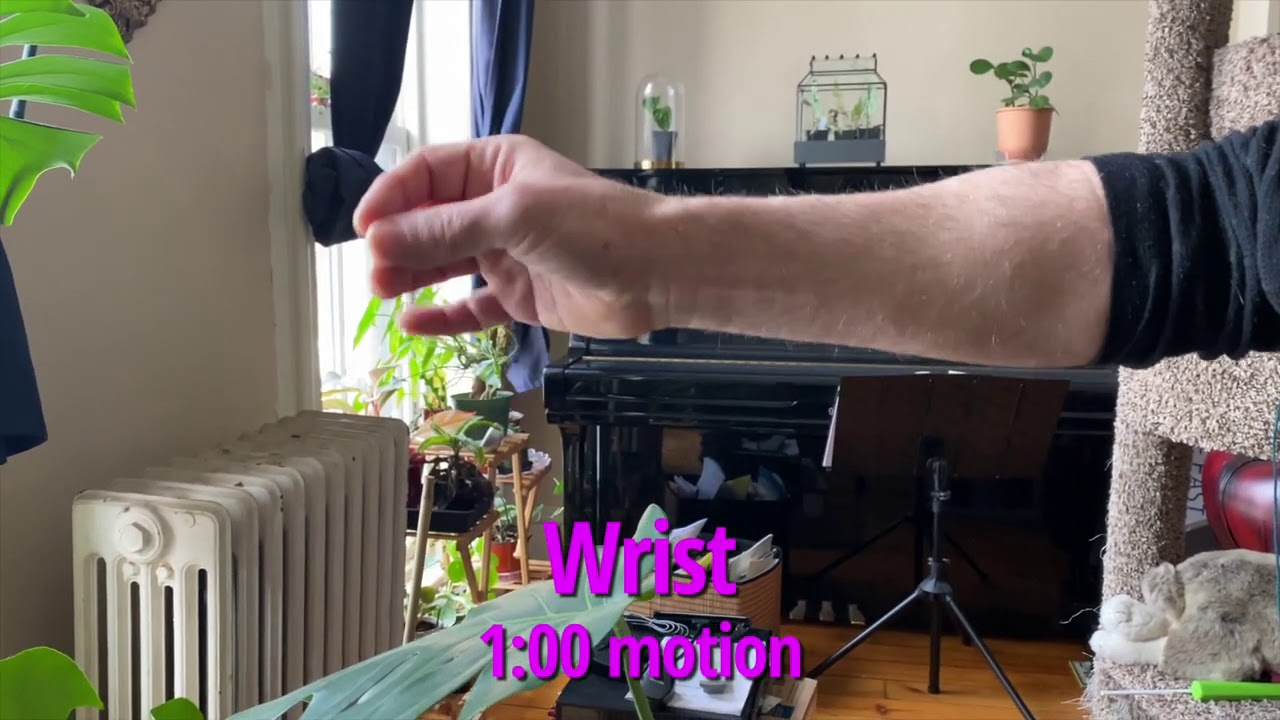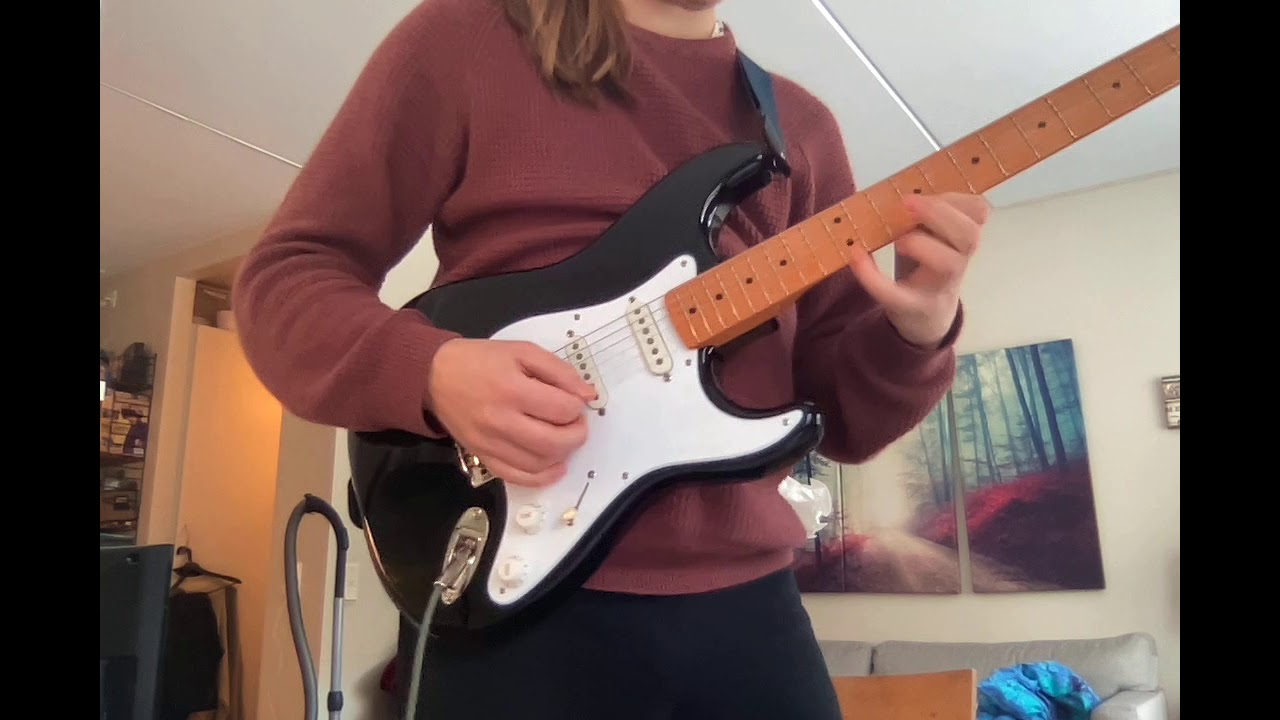These are awesome! Thanks for filming these. And thanks for doing those tests.
The wrist attempts look great. I get that you’re saying they feel like more work than the forearm techniques, and that’s fine. They may very well be. It’s tempting to just say, well, maybe you’re just better at forearm. But what does that really mean? Maybe it means that there is something you’re actually doing differently with the wrist approaches that is less optimal. Maybe, as you say, activating some other kind of motion in the forearm or arm.
I would also point out that not every wrist player is totally still — Andy Wood has some elbow joint motion when he goes fast. But he doesn’t really do a forearm wiggle unless he’s doing inside picking so that’s a decision, not a side effect. So maybe there is some very slight improvement in your wrist motion that can be learned and improved upon that you’re not yet doing. Because my earliest picking motions were all forearm-oriented, I definitely got a little of that wiggle sometimes. And I still see it on mandolin because the setup feels weird. But I’m seeing less of it now as I’ve spent time on and off tinkering on that instrument. I suspect at some point it will go away as I figure out how to only activate the wrist joint itself.
One thing which I can tell you helped for me is playing these '60s hardtail guitars where the bridge is super low. I can anchor completely on the body, above the strings, and that provides a flat reference point. There is much less tendency for me to wiggle the arm when I’m doing that, because the body surface is a tactile reminder to just go sideways and not rotate. Your bridge looks pretty low on that guitar, you could try sitting on the body just above it.
FYI all your wrist DSX attempts look supinated to me. Some are just more supinted than the others. That first video, that’s still supinated. If you look at your pinky heel in that clip — that’s the fat pad on the pinky side of the hand, where the palm meets the wrist joint. Is that part of your palm touching the strings?
If you look at Al’s form here, you can see that part of the palm resting on the bridge/strings. Just the poster frame for the video displays the contact:
Is that what you’re doing? When you see this kind of contact, this usually means the arm is tilted toward the pinky side of the hand, i.e. supinated relative to the strings. To actually be pronated relative to the strings, you’d need to lift that pad off the strings, and into the air a small amount. That’s what Molly Tuttle looks like.
From the Di Meola anchor position, a pure deviation motion would go down into the strings and trap. If you can do downstroke escape from this arm position, that means you would have to make the “2:00” motion, which is the motion Al makes. This is not pure deviation — it’s close to it, but a little angled. At :53 of that clip he plays the main riff to that tune and that looks exactly like 2:00 motion to me.
Again, take this with a grain of salt, but these are the best markers I know to look at for at the moment. But if that’s the case in your form, then that’s the arm position that you could use for all the motions you are demonstrating here — wrist DSX, wrist USX, and wrist DBX.
I think what you’re doing in your USX attempt is actually going down toward the body of the guitar, rather than simple sideways at the joint. This is (roughly) a 4:00 motion, i.e. “dart thrower motion”, which is also close to deviation, just on the other side of the axis compared to Al’s motion. The pick taps at the beginning of the clip are definitely doing that, moving more straight down toward the guitar rather than sideways across the joint. It’s less clear if the picked notes are doing that, but they might be. If you find that motion to be strange, that could be one reason why. To be clear, there is nothing wrong with 4:00 motion, but it could be that you’re digging into the strings a little when you try to do it from this arm position.
The textbook example of wrist USX from this arm position is Mike Stern. His motion is just pure deviation, going sideways with a slightly tilted arm. We teach this motion in the “wrist motion” section of the Primer, but we don’t have any table-top tests for pure deviation yet because I couldn’t figure out a comfortable way to do it. When resting on a table, the pinky heel has to lift off the table top to truly be deviation and not 2:00. And I couldn’t figure out an easy way to trick someone into doing that. Maybe placing something under there, like a pad of some kind.
Anyway, lots of typing here. Thanks for doing these and hope some of this helped!



 But since you seemed interested in our experiences with the new primer, I might as well take the chance and get some feedback.
But since you seemed interested in our experiences with the new primer, I might as well take the chance and get some feedback.







 And finally how the more supinated setup I feel more comfortable with. One thing I’d like to say though is that the more pronated setup feels a little bit more reliable since the hand has more stable contact with the guitar. So even if the motion is hindered and cramped, I feel powering through with that setup would almost feel safer in a live scenario. The rotational version is flimsier and more hit and miss sometimes.
And finally how the more supinated setup I feel more comfortable with. One thing I’d like to say though is that the more pronated setup feels a little bit more reliable since the hand has more stable contact with the guitar. So even if the motion is hindered and cramped, I feel powering through with that setup would almost feel safer in a live scenario. The rotational version is flimsier and more hit and miss sometimes.